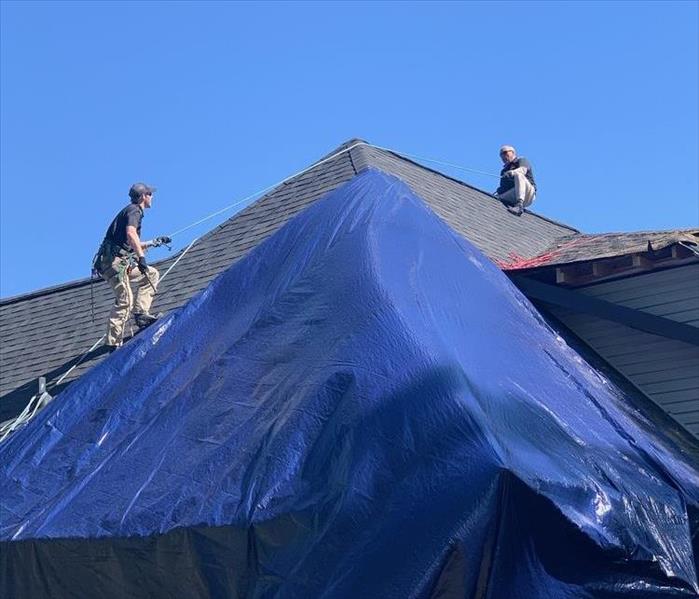How to Recognize Hidden Storm Damage
9/11/2024 (Permalink)
Storms can leave visible damage in their wake, such as fallen trees and broken windows. However, not all storm damage is immediately apparent. Hidden storm damage can lurk in places you might not expect, and if left unchecked, it can lead to more serious issues down the road. Recognizing these less obvious signs of damage is crucial for maintaining the safety and integrity of your home. At SERVPRO®, we understand the importance of thorough inspections after a storm. Here are some key indicators of hidden storm damage to watch for.
Roof
One of the most common places for hidden storm damage is the roof. While missing shingles are easy to spot, less obvious signs include granule loss, which can weaken your roof’s protective layer. Look for granules in your gutters or at the base of your downspouts. Additionally, check for any dents or cracks in metal flashing and vents, as these can be signs of hail damage.
Ceiling
Water damage is another concern that may not be immediately visible. After a storm, inspect your attic and ceilings for any water stains or dampness, which can indicate a leak. Pay close attention to the corners of rooms and around light fixtures. Water stains on walls, peeling paint, or wallpaper bubbling up are also red flags. If left untreated, water damage can lead to mold growth and structural issues.
Exterior
Your home’s exterior can also suffer hidden storm damage. Examine the siding for any cracks, dents, or holes, which can be caused by flying debris or hail. Even small openings can allow water to seep in, leading to further damage over time. Check for gaps around windows and doors, as strong winds can loosen seals and frames.
Foundation
Another area to inspect is your home’s foundation. Storms can cause soil erosion, leading to shifts in the foundation. Look for cracks in the foundation walls or floors, and check for doors and windows that no longer close properly, as these can be signs of foundation movement. Additionally, inspect your basement for any signs of water intrusion, such as damp walls or a musty smell.
Landscaping
Trees and landscaping around your property can also be affected by storms. Examine trees for broken branches or signs of uprooting. Fallen branches can damage roofs, siding, and power lines, while uprooted trees can disturb underground utilities and foundations. It’s essential to address any tree damage promptly to prevent further issues.
Gutters
Lastly, don’t forget to check your gutters and downspouts. Storm debris can clog gutters, preventing proper water drainage and leading to water damage around your home’s foundation. Clean out any debris and ensure that water is flowing freely away from your home.
Recognizing hidden storm damage early can save you time and money in the long run. Regular inspections after a storm, both inside and outside your home, are essential for catching these issues before they become major problems. At SERVPRO, we are here to help with professional inspections and restoration services to ensure your home remains safe and sound after any storm.





 24/7 Emergency Service
24/7 Emergency Service
